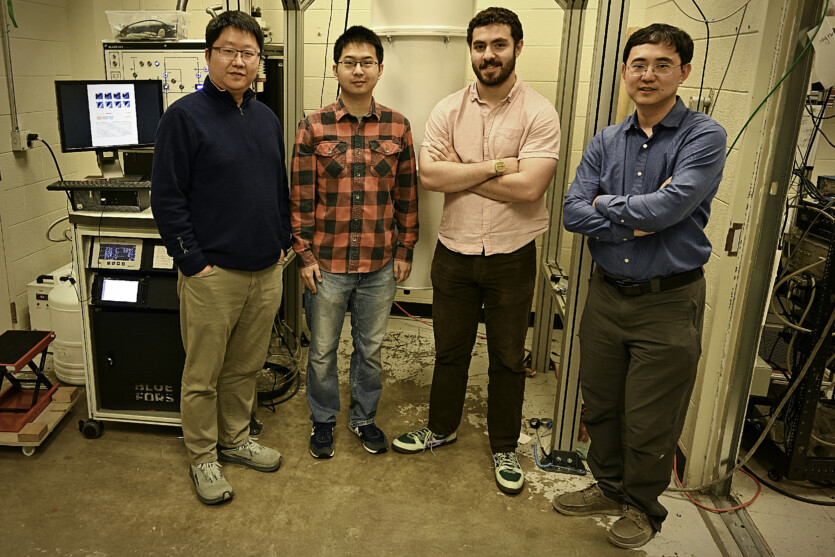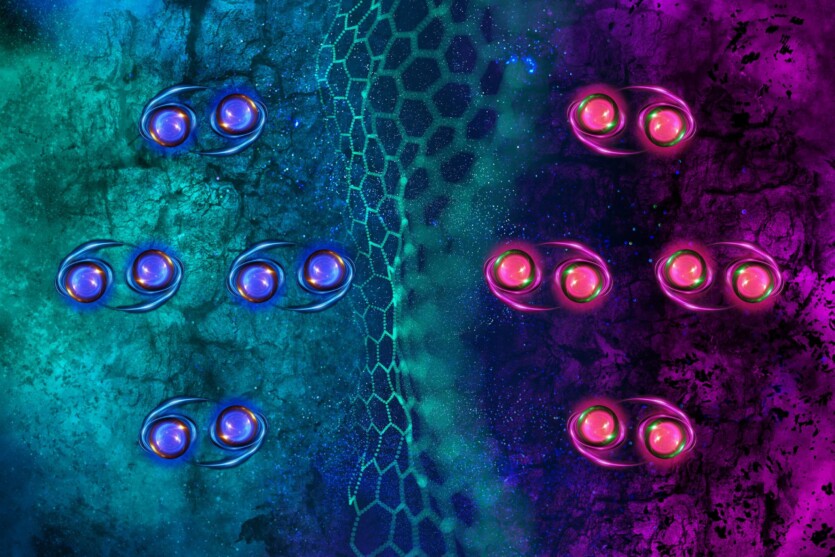
Researchers from the Massachusetts Institute of Technology (MIT) in the United States have discovered a unique superconductor in ordinary graphite that simultaneously acts as a magnet.
Traditionally, it was believed that superconductors and magnets are incompatible because superconductors displace magnetic fields. However, the discovery by MIT physicists refutes this claim. The chiral superconductor found in graphite layers conducts electric current with zero resistance and has magnetic properties.
The superconductor was discovered in rhombohedral graphene — a special form of graphite with 4-5 layers of graphene stacked in the form of «stairs». The scientists isolated microscopic particles of rhombohedral graphene from graphite and subjected them to a series of electrical tests.
It turned out that when these particles are cooled to about -273 °C, the material becomes superconducting. The researchers also found that when the external magnetic field changes, these particles could switch between two superconducting states, like a polarity reversal magnet.
This means that the superconductor has its own internal magnetism. MIT researchers observed this behavior in 6 samples. It has not been observed in any other superconducting material. The critical magnetic field reached 1.4 tesla — higher than that of other graphene superconductors.
«The general consensus is that superconductors do not like magnetic fields But we believe this is the first observation of a superconductor behaving like a magnet with such direct and simple evidence. And it’s quite surprising because it goes against people’s general understanding of superconductivity and magnetism», — says senior author of the study, professor at the MIT Department of Physics Long J.
In traditional conductive materials, electrons move chaotically, flying past each other, bouncing from the atomic lattice of the material. Every time an electron scatters on an atom, it encounters some resistance and as a result loses some energy, mostly in the form of heat. However, cooling some materials to ultra-low temperatures makes them superconducting. Under these conditions, electrons can pair up Instead of scattering, these electron pairs glide through the material without resistance. Thus, in a superconductor, no energy is lost during the movement.

Over the past few years, a team of researchers from MIT, Florida State University, the University of Basel in Switzerland, and the National Institute of Materials Science in Japan has been studying the electrical properties of five-layer rhombohedral graphene. They recently observed that this structure allowed electrons to split into parts of themselves. This can be observed if five-layer rhombohedral graphene is placed on a sheet of of hexagonal boron nitride and slightly offset at a suitable angle.
According to the researchers, the explanation for the unique properties of this material is its configuration. It has an extremely simple arrangement of carbon atoms. When cooled to ultra-low temperatures, thermal fluctuations are minimized, which slows down electrons and allows them to interact. Electrons can pair up and become superconductors. In this material, the electrons seem to «rotate» in one direction, like tiny magnets, following a special trajectory that scientists call the «valley of».
When all the electrons are in the same valley, they effectively rotate in the same direction rather than the opposite. In conventional superconductors, electrons can occupy any valley and any pair of electrons usually consists of electrons from opposite valleys that cancel each other out. The pair then has zero momentum in general and does not rotate.
«You can imagine two electrons in a pair rotating clockwise or counterclockwise, which corresponds to a magnet pointing up or down. Therefore, we think this is the first observation of a superconductor that behaves like a magnet due to the orbital motion of electrons, which is known as a chiral superconductor. It is one of a kind. It is also a candidate for a topological superconductor that can enable reliable quantum computing», — emphasized one of the study participants Tonghang Han.
Discovery can lead to the creation of stable quantum bits (cubits), improved MRI magnets and energy-efficient electronics, which reduces power consumption by 20-30%. Scientists plan to study how to increase the temperature of superconductivity and create scalable devices.
World’s smallest semiconductor structure used to produce «pure» hydrogen
The results of the study are published in the journal Nature
Source: SciTechDaily

Spelling error report
The following text will be sent to our editors: